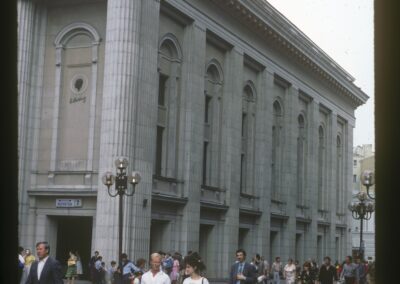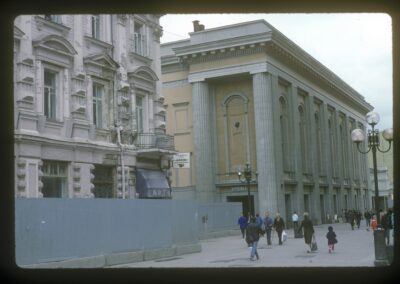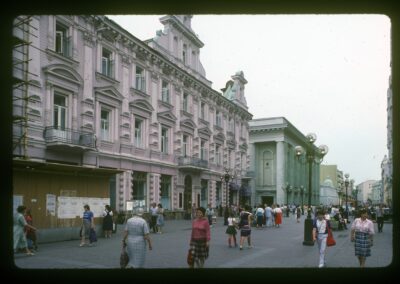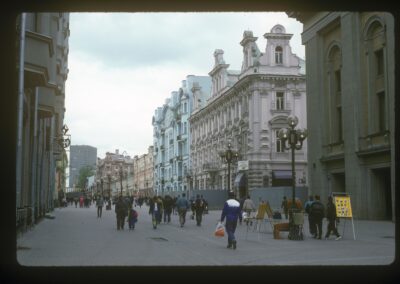ARBAT STREET
Street in the Central Administrative District of Moscow
Arbat Street expands from Arbat Gate Square to Smolenskaia Square. Named after the old suburb “Arbat”, this street became a hub of Russian society. A fire in 1736 allowed for Arbat to be rebuilt and developed, making it a destination for Russian aristocratic families to settle. Originally the street was comprised of family homes, all equipped with a unique feature: mezzanines. In 1806, the first theater was built, and soon following Arbat flourished with hotels, shops, and multi-story apartment buildings.
Evgenii Vakhtangov State Academic Theater, Arbat Street 26 / 2 Bol. Nikolooeskovskii lane
Architect: Pavel Wasilievich Abrosimov Photo date: 8/6/87
Evgenii Vakhtangov State Academic Theater, Arbat Street 26 / 2 Bol. Nikolooeskovskii lane
Architect: Pavel Wasilievich Abrosimov Photo date: 8/6/87
M.A. Skvortsov Apartment building, Arbat Street 28 / 1 Bol. Nikolopeskovskii Lane
Right: Evgenii Vakhtangov State Academic Theater, Arbat Street 26 Architect: A. A. Ostrogradsky, built-in 1901-1903 Photo date: 6/7/1993



